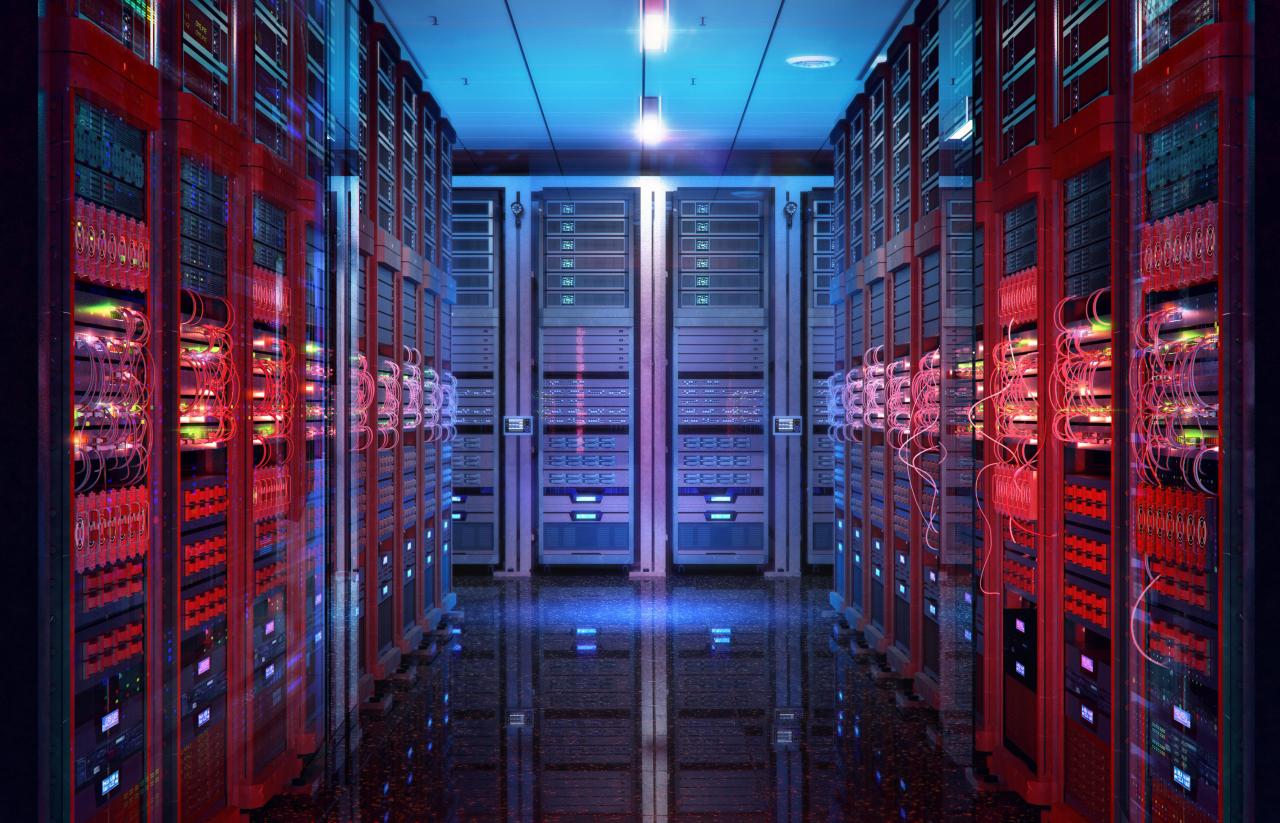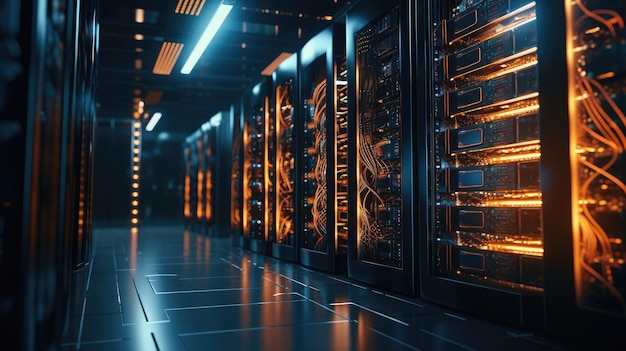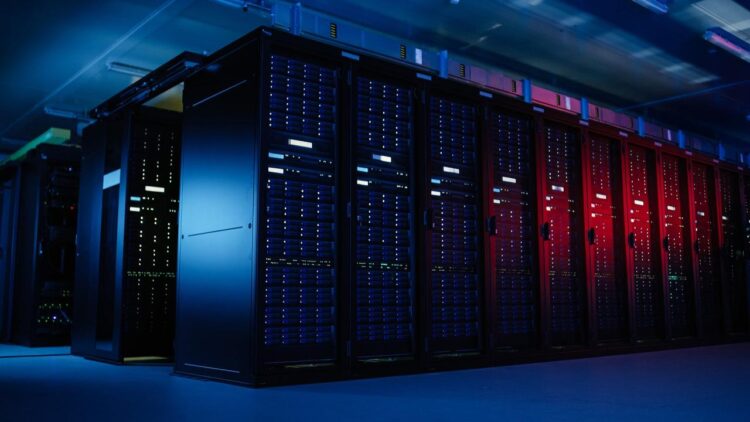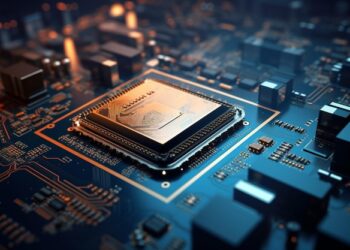The year 2025 marks a new era in the world of computing, where the demand for speed, efficiency, and scalability has reached unprecedented levels. High-performance servers are no longer just for large data centers; they are the core component powering everything from global e-commerce platforms and artificial intelligence (AI) research to advanced scientific simulations and real-time data analytics. This comprehensive article delves into the key technologies and architectural trends that are defining high-performance servers in 2025. We’ll explore the cutting-edge hardware, including next-generation CPUs and GPUs, the role of revolutionary cooling systems, and the transformative impact of AI on server management. Our goal is to provide a detailed, authoritative guide for IT professionals, business leaders, and tech enthusiasts who need to understand the intricate components that make up a top-tier server. By focusing on the underlying principles and practical applications, this article will equip you with the knowledge to make informed decisions that ensure your infrastructure is not only powerful but also future-proof. The strategic choice of a high-performance server is a direct investment in your organization’s agility, innovation, and competitive edge.
A. Next-Generation Processing Power

At the heart of any high-performance server are its processors. In 2025, a new generation of CPUs and GPUs is pushing the boundaries of what is computationally possible, moving beyond simple clock speed increases to architectural innovations.
A.1. The Evolution of CPUs
The processors of 2025 are designed for parallel computing and specialized workloads. The focus has shifted from single-core performance to a massive number of cores, a larger cache, and specialized accelerators.
- Intel Xeon and AMD EPYC Processors: The latest iterations of these server CPUs feature core counts exceeding 100, built on advanced fabrication processes (like 2nm and 3nm) that increase transistor density and energy efficiency. They are designed with multi-die architectures, allowing for more flexible and scalable designs. Key innovations include:
- Chiplet Design: Instead of a single monolithic chip, modern CPUs are made of smaller “chiplets” connected by high-speed interconnects. This modular approach improves manufacturing yields and allows for a mix-and-match approach to create processors tailored for specific tasks, whether it’s a high-core-count for virtualization or a large cache for database management.
- Integrated AI Accelerators: Processors now come with built-in AI and machine learning accelerators. These specialized cores, often based on a tensor processing unit (TPU) design, dramatically speed up tasks like natural language processing, image recognition, and machine learning model inference, offloading these complex computations from the main CPU cores.
A.2. The GPU as a Computational Powerhouse
GPUs (Graphics Processing Units) have become indispensable for high-performance computing, especially for AI, machine learning, and scientific simulations. The GPUs of 2025 are designed as parallel processing beasts.
- NVIDIA Hopper and AMD Instinct Accelerators: These are not your typical gaming GPUs. They are designed from the ground up for data center workloads. Their key features include:
- Massive Parallelism: With tens of thousands of cores, they can perform millions of calculations simultaneously, which is essential for training large AI models.
- High-Bandwidth Memory (HBM): These GPUs are equipped with HBM, a type of memory with an extremely high data transfer rate, which prevents the CPU from becoming a bottleneck and ensures the GPU can be fed data at a rate it can handle.
- SVI (Scalable Vector Interconnect) Technology: This technology allows multiple GPUs to be connected in a single server with a high-speed link, enabling them to work together as a single, massive computational unit. This is critical for training complex models that are too large to fit on a single GPU’s memory.
B. Memory and Storage
A powerful processor is useless without fast access to data. In 2025, innovations in memory and storage are eliminating bottlenecks and ensuring data can be read and written at breakneck speeds.
B.1. Next-Generation Memory
- CXL (Compute Express Link): CXL is a revolutionary open standard for a high-speed interconnect that allows CPUs, GPUs, and other devices to share memory. This technology enables a server to use a pool of memory, dynamically allocating it to different processors as needed. This is a game-changer for resource utilization and scalability. For example, a CPU could borrow a GPU’s memory to perform a task, reducing the need for costly data transfers.
- DDR5 and DDR6 RAM: The latest generations of RAM are significantly faster and more energy-efficient than their predecessors. They are crucial for supporting the massive data throughput of modern processors.
B.2. The Evolution of Storage
- NVMe SSDs: Non-Volatile Memory Express (NVMe) SSDs are the standard for high-performance storage. They connect directly to the server’s PCIe bus, bypassing the bottlenecks of traditional SATA connections. In 2025, we are seeing the widespread adoption of PCIe 5.0 and even PCIe 6.0, which double and quadruple the bandwidth of previous generations, respectively. This means a server can read data at speeds measured in gigabytes per second.
- Persistent Memory: This is a hybrid technology that combines the speed of RAM with the persistence of storage. It can be used for high-speed logging, caching, and database acceleration, as it retains data even when the server is powered off.
C. Cooling and Power Management

The immense power of 2025 servers generates a significant amount of heat. Advanced cooling solutions and intelligent power management are essential to prevent thermal throttling and ensure stability.
C.1. Liquid Cooling
Air cooling, while still used, is no longer sufficient for the most demanding workloads. Liquid cooling, once a niche, is now becoming mainstream in data centers.
- Direct-to-Chip Liquid Cooling: This involves routing a coolant directly to the CPU and GPU dies, where the most heat is generated. This is significantly more efficient than air cooling and allows processors to run at higher clock speeds for longer periods.
- Immersion Cooling: Entire servers are being submerged in a non-conductive, dielectric fluid. This method provides the most efficient cooling possible, allowing for extreme power densities and server configurations that would be impossible to cool with air.
C.2. Intelligent Power Management
- AI-Powered Power Management: AI is being used to dynamically manage power consumption in data centers. The AI can predict a server’s workload and adjust its power draw in real-time, reducing energy waste during periods of low usage. It can also optimize the power distribution across a server rack, ensuring that no single server is drawing too much power and causing a circuit overload.
D. Software and Orchestration
The hardware is only as good as the software that manages it. The servers of 2025 are running on intelligent, self-healing, and AI-driven software.
D.1. AI-Powered Server Management
- Predictive Maintenance: AI models analyze a server’s performance metrics (e.g., temperature, fan speed, disk I/O) to predict potential hardware failures before they occur. This allows IT teams to replace a failing component proactively, preventing downtime and data loss.
- Automated Load Balancing: AI-powered software automatically distributes workloads across multiple servers to ensure no single server is overwhelmed. It can also intelligently migrate virtual machines to different servers to optimize for performance and energy efficiency.
D.2. Containerization and Orchestration
- Kubernetes: Kubernetes has become the de-facto standard for container orchestration. It allows developers to deploy and manage applications in a scalable and resilient manner. It automatically manages scaling, networking, and storage for applications, freeing developers from complex infrastructure management tasks. The servers of 2025 are optimized to run containerized workloads, with hardware features that directly accelerate container performance.
E. Security and Resilience
A high-performance server is a prime target for cyberattacks. The servers of 2025 are designed with security embedded at the hardware level.
E.1. Hardware-Based Security
- Trusted Platform Module (TPM): TPM 2.0 is a standard for hardware-based security. It provides a secure way to store encryption keys and digital certificates, protecting the server from low-level attacks.
- Secure Boot and Measured Launch: These features ensure that the server’s firmware and operating system have not been tampered with. If any unauthorized changes are detected, the server will not boot, preventing malicious software from taking control.
- Confidential Computing: This is a revolutionary technology that encrypts data while it’s being processed in memory. It protects data from being accessed by the server’s operating system, hypervisor, or even other processes, providing the highest level of data security for sensitive applications.
Conclusion
The high-performance servers of 2025 are a testament to the relentless pace of innovation in the technology sector. They are no longer just faster versions of their predecessors; they are fundamentally different machines, built on a foundation of cutting-edge processors, a revolutionary memory and storage architecture, and intelligent software. The integration of AI is the most profound change, as it transforms servers from passive hardware into proactive, self-managing, and predictive systems. From managing power and predicting maintenance needs to accelerating complex workloads, AI is the brain that makes these servers so powerful. The widespread adoption of liquid cooling and new standards like CXL are addressing the physical challenges of heat and memory bottlenecks, allowing for unprecedented power densities and efficiency. Furthermore, security is no longer an afterthought but is woven into the very fabric of the hardware, providing robust protection against increasingly sophisticated cyber threats.
This new generation of servers is the engine that will power the next wave of technological breakthroughs. They are essential for a wide range of applications, including the development of more advanced AI models, the processing of massive real-time datasets, and the creation of immersive virtual worlds. For any organization looking to stay competitive, investing in a server that embodies these innovations is not just a choice, but a strategic imperative. It’s about building an infrastructure that is not only robust and scalable but also intelligent, efficient, and secure. The servers of 2025 represent the pinnacle of modern engineering, and they are paving the way for a future that is faster, smarter, and more connected than ever before.










